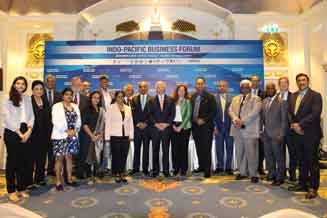Tips for American companies doing business in India
3 min read
Here are some of the best ways to conduct business in India, a country that is predicted to become the second-largest economy in the world by 2030. If you had made this claim ten years ago, it would have sounded like science fiction, yet everyone now seems to agree that India is on the rise. A population of 1.3 million, with an increasingly lively middle class and a large percentage of the population comprised of young people, India’s potential looks virtually infinite.
While India’s low-cost outsourcing of back-office or R&D-type operations continues to prosper, the country’s economy needs to be regarded in a completely different light these days compared with the past. India is the greatest market for products and services in the world. India, on the other hand, has a long way to go before it can compete with China’s infrastructure and service sector. While the need for growth is evident in the first- and second-tier cities of India, it becomes much more necessary in the third and fourth-tier cities. The people of India are aspiring, energizing, open, and ready for advancement like the country itself.
Precious Cultural Heritage
All of the major outsourcing projects in India have presented people with huge cultural benefits. India’s religious, social, and ethnic heritage are profoundly embedded in the country’s economic culture. Indians tend to speak fluent English and the country has a history heavily impacted by the West.
A thorough grasp of the Indian cultural landscape is essential to your success in the country. To be successful in India, it is necessary to run a cultural awareness program to assist them to get more comfortable in the country. It’s critical to start by taking into account some important cultural aspects. The American Chamber of Commerce can help you out to understand Indian culture in a better way.
Research
Research is the most common error organizations make when considering India as a potential market. It would be an understatement to say that India is immense. If you’re looking at a country with over 1.3 billion people, you can’t treat it as one homogenous entity. There is no such thing as a single “India strategy,” but rather a series of “India plans.”
“Is India a good fit at this stage of your development, taking into account the current demands of India?” is the first question to ask. The answer to this question isn’t straightforward. An important issue is your pricing point, and how it compares to the other options available to you in India. What are your primary competitors, and how are they doing? You may not see a return on your investment in India for a few years, but can you afford to put your money there? There are many cities and regions to choose from.
Conclusion
All of these concerns require answers, but in India, it can be difficult to locate reliable sources of data. You’ll need to work with local experts in India who understand the market well enough to provide you with frank and reliable responses to critical strategic questions. If you think you can accomplish all of your research on a laptop at home, you’re in an illusion. Organizations like AMCHAM INDIA can help you in this endeavour.





